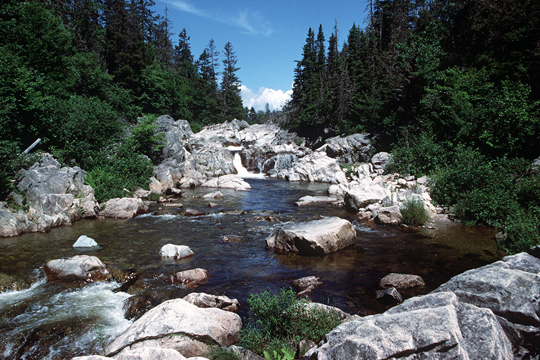Fundy National Park is a protected wilderness area in southern New Brunswick, Canada. It covers 50,900 acres (20,600 hectares) of land on the northern shore of the Bay of Fundy, which separates New Brunswick from Nova Scotia. The park has both highland and coastal regions. The government of Canada established the park in 1948.

Tidal flats, salt marshes, and seaside cliffs appear along the coast of Fundy National Park. Tides at the coast can reach about 39 feet (12 meters). Inland, a thickly forested plateau, crossed by deep valleys, rises about 985 feet (300 meters) above sea level. This region is known as the Caledonian Highlands. The Point Wolfe and Upper Salmon rivers flow through Fundy National Park. There are also several lakes.
Fundy National Park has a moderate climate with cool winters and breezy summers. Average temperatures range from about 30 to 70 °F (–1 to 21 °C). The park receives about 55 inches (140 centimeters) of precipitation each year.
Black bears, bobcats, white-tailed deer, red foxes, and moose are among the most common mammals living in the park. Nearly 200 kinds of birds have been recorded in the park, including ducks, geese, hawks, herons, kestrels, and owls. The coast of the park lies along a bird migration route, and many birds stop there to rest. Fir and spruce trees dominate the inland forests, which also include birches and maples. A number of rare ferns grow in the park.
Activities for park visitors include boating, camping, cycling, fishing, hiking, interpretive events, and lake swimming. Fundy National Park also has a golf course, tennis courts, an outdoor theater, a heated saltwater pool, and dozens of guest chalets.
